Benwood Mine Disaster
Introduction
Text-to-speech Audio
Images
Benwood Mine Disaster Historical Marker. It was erected in 2009.
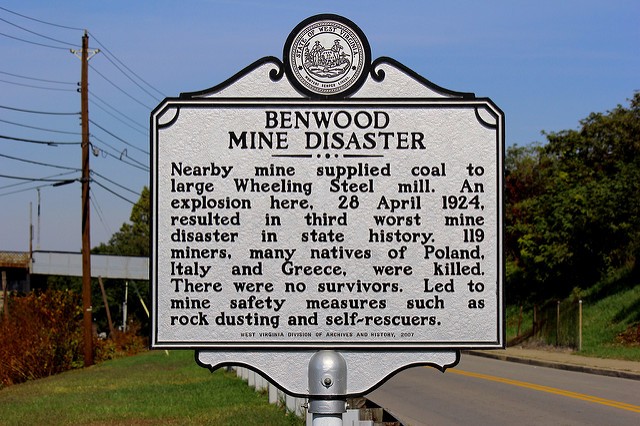
Wheeling Steel Corporation logo.

A group of rescuers going into the mine in 1924.
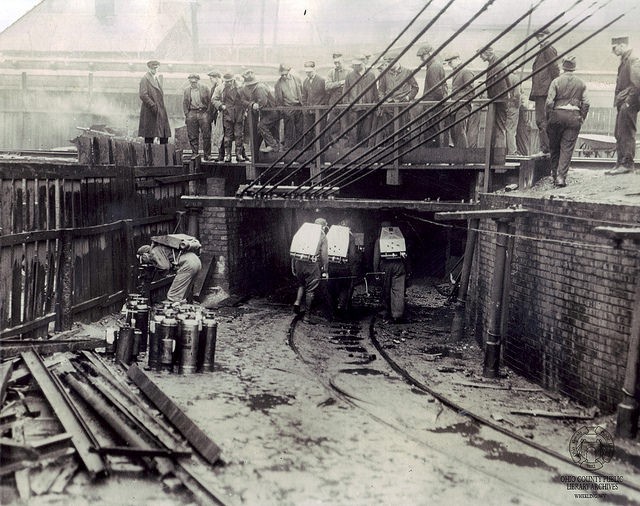
The crowd gathers outside the mine and around town following the news of an explosion on April 24, 1924.
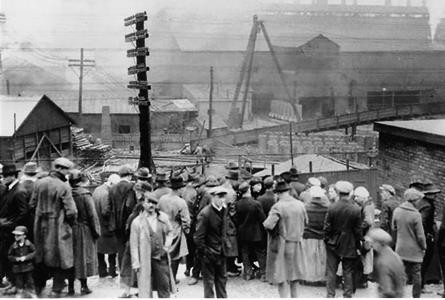
The mass graves of the victims. They were laid to rest in May 1924.
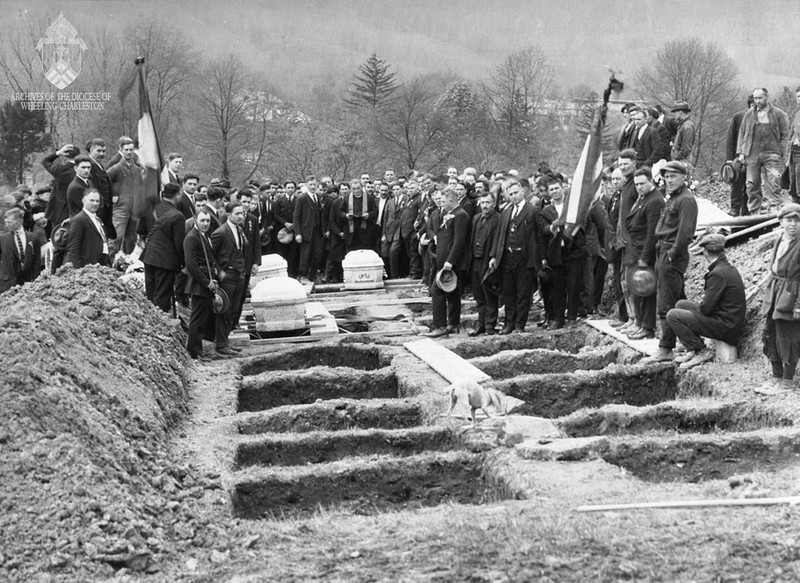
The Benwood Mine Disaster honoring the victims. It was put up in 2014.
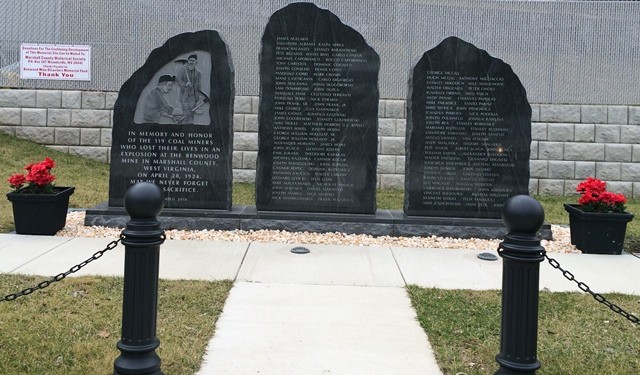
Backstory and Context
Text-to-speech Audio
The Wheeling Steel Corporation opened their mines in 1866. The Benwood mine supplied coal to the steel mill. The Wheeling Steel Corporation was actually formed in in 1920 when three companies consolidated-La Belle Iron Works, Wheeling Steel & Iron Works, and Whitaker-Glessner Company. In the 1920, the Wheeling Steel Corporation employed over 17,000 employees and was the third largest steelmaker in the United States. In the 1880s, the first steel pipe produced in the United States was made at the Benwood works of Wheeling Steel.
On a typical work day, miners would clock in at 6:30 am and make their way into the mine. They have to enter into the mine in teams. The first two teams had made their entry by 7:05am when the explosion happened. An explosion was believed to happened in the 8-north section of the mine. All checks and inspections had been done that morning and no gases were reported. Deliveries were made by the night crew which was supervised by one of the fire bosses. However, after the inspections were done, a roof fall happened and there was a release of gases. A miner came upon it thinking that the fire bosses had inspected it and cleared the area. He lit a flame, thinking he was safe--little did he know, it would cause the whole mine to go up in an explosion. Of the 119 men who died, most were found at the spot were they worked. They died almost instantly from the explosion. If they survived the explosion, they were unable to survive the damp or the crushing roof falls after. At least, 35 of the men died from suffocation because they did not have gas masks. The majority of the miners were of Eastern or Southern European descent including Italian and Polish.
It took the Wheeling Steel Corporation nearly 17 hours before they started releasing information about the disaster. It was midnight on April 29 before the first news bulletin went out. No official report was being made as to what caused the explosion. It is still not completely known. It is believed to been caused by a pocket of gas that ignited. It was propagated by coal dust, swept all the inner workings and galleries of the mine. The families of the miners started to appear at the mine not long after it happened. However, because most of the miners were from all over Europe and spoke many different languages, it was hard to communicate with victim’s families.
The roof falls caused the explosion made it hard for miners who survived the explosion to get out. However, it also made it hard for rescuers to get in. The rescuers had to make short trips in simply because of the after-damp and the gases that remained. It was a long and treacherous recovery effort. The disaster led to efforts in reduction of coal dust and the passage of laws to make mines safer.
Cite This Entry
Stephanie Fragale. "Benwood Mine Disaster." Clio: Your Guide to History. April 24, 2018. Accessed April 3, 2025. https://theclio.com/tour/1098/12/reverse
Sources
Benwood Mine Disaster. WV Archives & History. April 29, 1924. Accessed April 03, 2018. http://www.wvculture.org/history/disasters/benwood03.html.
Duffy, Sean. The Benwood Disaster of April 28, 1924. No Survivors: 91 Years Ago Today in Benwood. April 15, 2015. Accessed April 15, 2018. http://www.archivingwheeling.org/blog/no-survivors-91-years-ago-today-in-benwood.
.
Lambie, R. M.. Benwood Mine Disaster. Report on Mine Explosion AR1533. . Accessed April 04, 2018. http://www.wvculture.org/history/disasters/benwood01.html.

